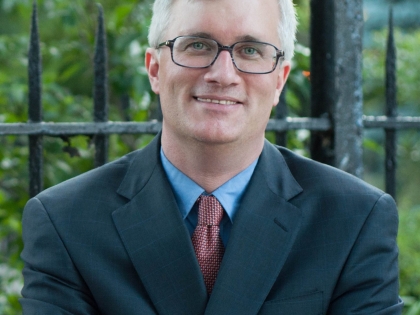
Elected Officials Release Statement on Ongoing Discussions of Brooklyn-Queens Expressway Reconstruction Project
December 21, 2018

(Brooklyn, NY) — On September 27, 2018, at a public meeting at the Ingersoll Houses Community Center, the New York City Department of Transportation (DOT) proposed two potential options for consideration to carry out the necessary reconstruction of the 1.5-mile stretch of the Brooklyn-Queens Expressway (BQE) from Atlantic Avenue to Sands Street.
Since DOT’s presentation, U.S. Congresswoman Nydia Velázquez, State Senator Brian Kavanagh, Assemblymember Jo Anne Simon, and Councilmember Stephen Levin have participated in several discussions with constituents, community organizations, and government officials, including DOT, regarding the initial proposals and potential alternatives. They released the following statement as an update on the status of these conversations:
“While we understand that reconstruction of the BQE is a necessary project—and that any project of this scale would inevitably be difficult and disruptive—both of the options the City has proposed so far would have significant and profoundly problematic impacts on the communities we represent.
“On one hand, many local residents have understandably objected to DOT’s proposal to replace the treasured and historic Brooklyn Heights Promenade with a six-lane highway for six years right outside their homes. On the other hand, many have also objected to the conventional lane-by-lane construction project, which would take longer, involve extensive nighttime and weekend work, and likely flood our local streets with thousands of trucks and cars diverted during construction.
“Each of these approaches would entail numerous negative impacts on the health, safety, and quality of life of local residents. As such, we are committed to ensuring that all plausible alternatives are fully considered before any version of this project receives the Federal, State, and City approvals that will be necessary before DOT can move forward.
“We appreciate that DOT has agreed to examine alternative solutions beyond the existing proposals, including a thorough analysis of the Brooklyn Heights Association’s proposal, which would pull the temporary bypass highway away from Heights residences, using the Brooklyn Bridge Park side of Furman Street and part of the area where the Park’s berms are currently located. We look forward to seeing DOT’s timely analysis of the feasibility and impacts of this option and of any additional options that DOT or others may identify. We also appreciate that DOT has recently committed to us that they will hold a series of robust discussions with local residents and stakeholder groups to review the proposals and discuss alternatives and outstanding concerns.
“In addition to engaging with DOT, we recognize that identifying all feasible options requires us to work closely with our constituents, with each other, and with all of the relevant agencies in Federal, State, and City government. These conversations are in motion and we are committed to ensuring an extensive and thorough community engagement process.
“We hope that our constituents and other New Yorkers with questions, concerns, or ideas about this project will continue to be in touch with our offices.”
About the BQE Reconstruction
This portion of the BQE, built in the 1940s and 1950s, has received minimal rehabilitation over the last 70 years compared to much of the surrounding route. Working with the Federal Highway Administration, the New York State Department of Transportation researched the process of rehabilitating this section of the BQE in 2006, including conducting an environmental impact study, but halted its plans in 2011, apparently due to financial concerns. This project has since fallen to the City DOT, whose engineers have determined that highway traffic, especially trucks, would need to be routed onto local streets if no action is taken. The Brooklyn Heights Promenade, cantilevered over a portion of the BQE and attached to the highway structure, also requires major rehabilitation to remain safe and usable and will need to be taken out of service at some point, regardless of the method used for BQE reconstruction. Thus far, the City DOT has proposed only two possible options for the reconstruction: one using an incremental lane-by-lane approach, and the other using a temporary Promenade-level bypass highway during construction.
The incremental approach would be a standard highway rehabilitation project, with closure of traffic lanes and extensive roadwork occurring over many nights and weekends during the course of eight or more years. The night and weekend closures would divert traffic onto Brooklyn streets and might potentially extend into some weekday mornings. This approach would also impose nighttime construction noise and other quality of life concerns upon the communities through which the BQE passes and beyond.
The temporary bypass roadway approach would involve building a six-lane elevated highway at the level of the Promenade to accommodate the existing BQE traffic, permitting full reconstruction of the permanent highway below. This approach would place the temporary highway right outside of homes along the Promenade, causing significant noise and air pollution. DOT believes that this would cut the project duration by two years or more and avoid most lane closures, diversion of traffic to local streets, and night and weekend construction noise. The Promenade would be out of service for much of the six-year construction period and then returned to its current public use.
For more information about this project, please contact the office of Congresswoman Velázquez at 202-225-2361, State Senator Kavanagh at 718-875-1517, Assemblymember Simon at 718-246-4889, or Councilmember Levin 718-875-5200, or visit DOT’s website dedicated to this project at https://bqe-i278.com.
###
Share this Article or Press Release
Newsroom
Go to NewsroomNew York State Senate Dems push voting reforms
January 11, 2022
